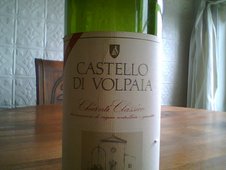Perhaps part of the problem was that the niche market for the oddball liqueur was a static one. For decades, there was but one brand of the stuff: Jeppson's Malört. But now, suddenly, there has been a 100% increase in selection. That's right: there are now two Malörts on the Chicago market. The second is being made and sold by a bartender at The Violet Hour cocktail bar, in collaboration with a local distiller. It is called R. Franklin’s Original Recipe.
Then again, maybe there is still only one Malört. When writing this piece for the New York Times, I tried to contact the Jeppson's people. They did not get back to me until after the item had ran. Patricia D. Gabelick, president of Jeppson's, had this to say: "what Leatherbee is planning on producing is not a Malört. A true Swedish Malort cannot be over 80 proof. With all the additives and the high proof it certainly sounds like an Absinthe."
Here's the article:
Here's the article:




